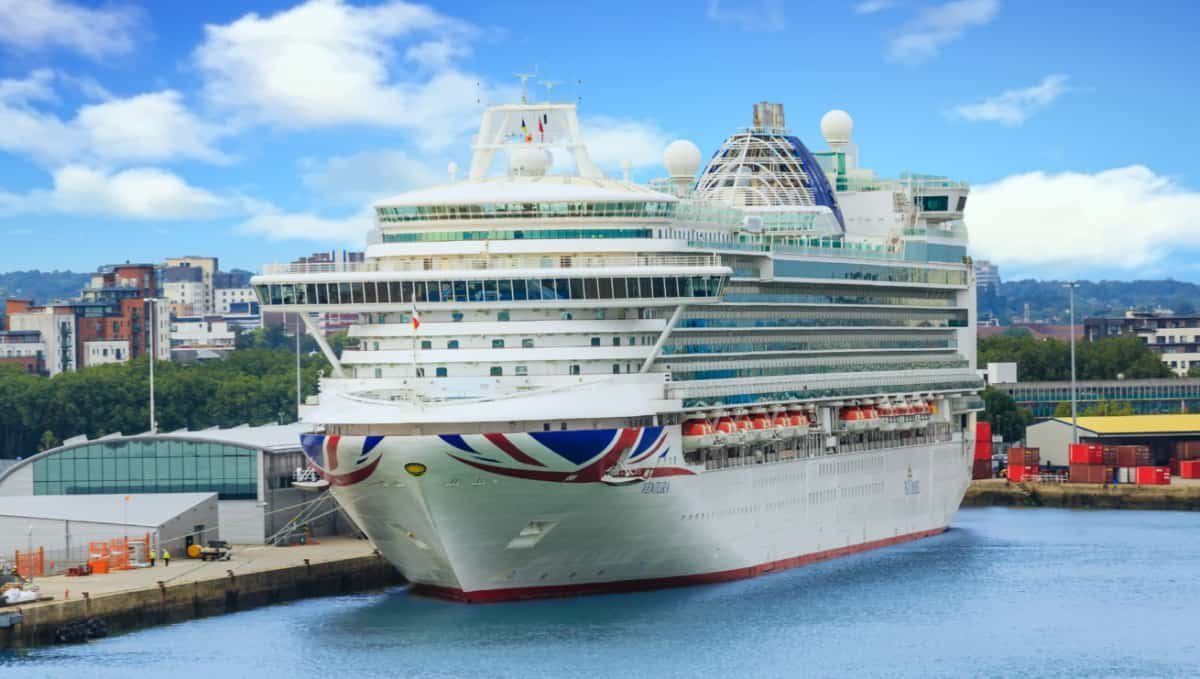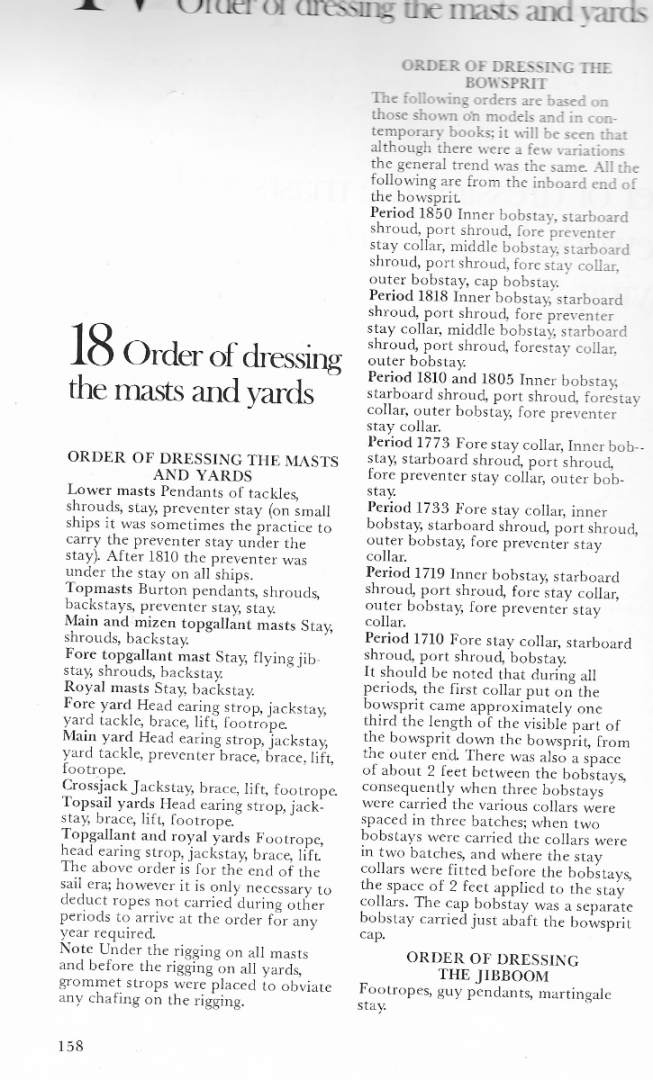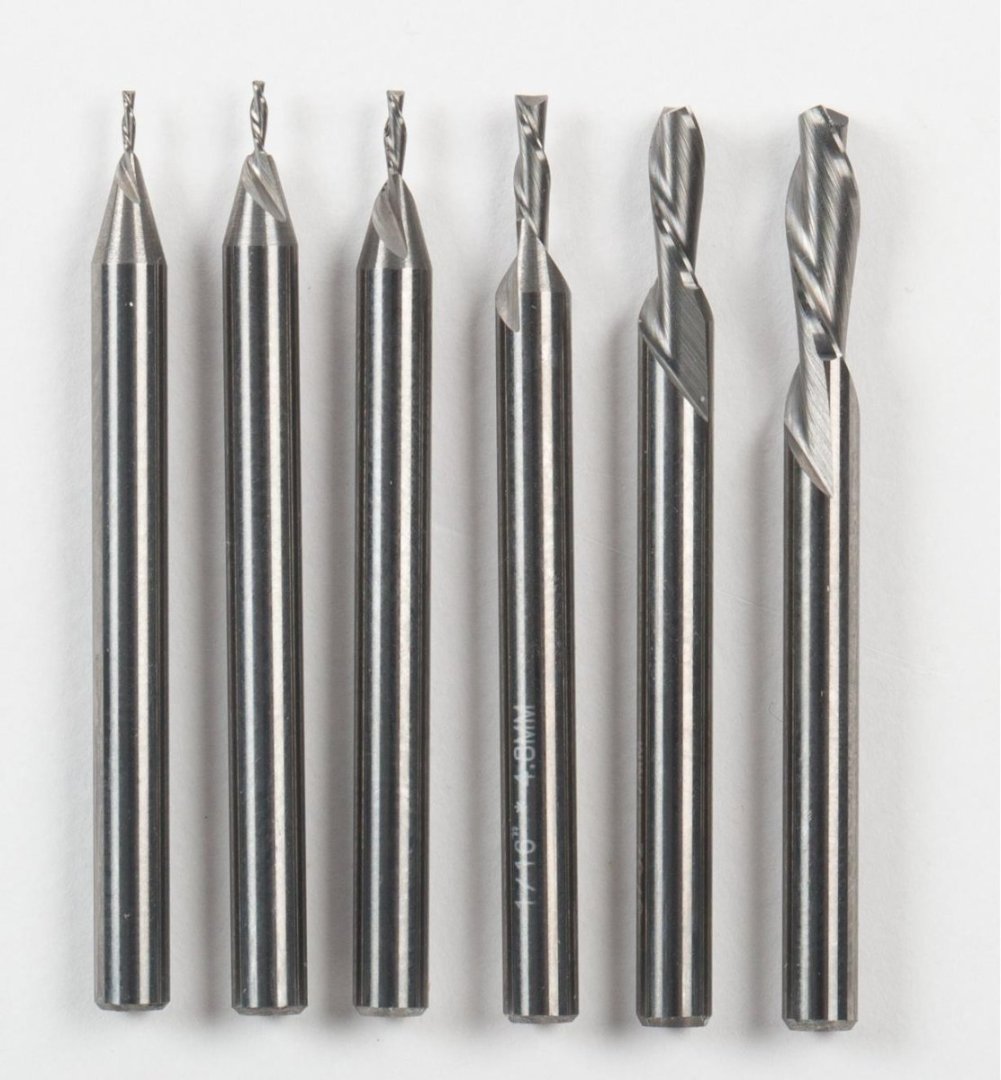-
Posts
8,149 -
Joined
-
Last visited
Content Type
Profiles
Forums
Gallery
Events
Everything posted by allanyed
-
Me too. I cannot find a picture anywhere. The only information I can find is from Caruana .History of English Sea Ordnance Volume II, page 383 It is documented in the first edition of Falconers Marine Dictionary , (T. Cadell, London, 1769) where it is stated that "the middle of the breeching is seized to the thimble of the pommillion", when the guns were cast loose prior to firing. The so-called Burner edition of Falconer, published by Cadell in 1815 is more specific (but very out-of-date) stating that the breeching "is fixed by reeving it through a thimble, strapped upon the cascabel". A gun fitted in this manner exists at the Rotunda Museum of Artillery Allan
-

Danny Vadas' masting and rigging spread sheet
allanyed replied to allanyed's topic in Masting, rigging and sails
Thank you very much Ben and Bruce!!! VERY much appreciated. Allan -
Way too much to copy from Caruana's History of English Sea Ordnance Volume II, pp381-3 In short, up to about the middle of the 18th century the breeching was simply taken in a round turn round the neck of the button and secured by means of a seizing. The next solution employed wrought iron double thimbles attached to the neck of the button. The thimbles were eventually discontinued in favor of a spliced eye in the bight of the breeching. This is described in Steel's Art of Rigging of 1797. Of course the breeching ring of the Blomefield changed everything. Allan
-

Danny Vadas' masting and rigging spread sheet
allanyed replied to allanyed's topic in Masting, rigging and sails
Sorry Ben, but I have no idea what you mean. All I know is that it says Microsoft is blocking due to macro. Allan -
Has anyone recently tried to use this lately? I had no issues in years past but recently I get a message that the program has a potentially dangerous macro and will not open. I have no idea what that means, and I am worried the program has been compromised. It would be a shame as it quickly provides the same data based on James Lees proportions in The Masting and Rigging of English Ships of War. (The exception is the time period 1670-1710 as the ratios Danny used in the spread sheet are incorrect and should not be used.) Allan
-
There are several errors in Steel's Elements and Practices of Naval Architecture as well, usually scantlings on two lines transposed such as breadth having the thickness dimension and thickness having the breadth dimension. Even with these few miscues both the Steel rigging and building books are great, the only drawback is that they apply to a somewhat limited time frame. Allan
-

Sander thickness The Hog
allanyed replied to AlainB's topic in Modeling tools and Workshop Equipment
I don't know where you are located in France, but if you are in Provence I would work in the garden every day that I could, surrounded by lavender, and snacking on Charentais melons. Allan -

2023 Donations drive
allanyed replied to James H's topic in Using the MSW forum - **NO MODELING CONTENT IN THIS SUB-FORUM**
My pleasure.🙂 The MSW site has brought me MANY hours of pleasure and the donation is the very least I could do. The Admiral told me that based on the amount of time I spend on the site (and out of her space) that I should not cheap out. Thanks for the CAMM pass. I will do my best to get to at least a couple of the museums, including the one in Bradenton which is on our way to Tampa in October when we are going up to see Aerosmith on their last concert tour. Good times!!!! Allan -

2023 Donations drive
allanyed replied to James H's topic in Using the MSW forum - **NO MODELING CONTENT IN THIS SUB-FORUM**
You are right. There should be a way of typing in a unique amount like a lot of restaurant machines now have. Allan -

Sander thickness The Hog
allanyed replied to AlainB's topic in Modeling tools and Workshop Equipment
It looks similar to the Jim Byrnes sander. I cannot speak for the Vanda Lay unit but my Byrnes unit is about 15 years old and runs like the day I bought it. Thousands of board feet of wood have gone through it. It is a bit more compact than the Vanda Lay unit with the motor built into the frame. No matter which unit you choose, DO NOT use it without a vacuum hose attached. If you do not have a shop vacuum set up, portable or otherwise, you will need one. The amount of fine power sawdust created is immense and will cover everything, including you. Wear a mask!!!!! Allan -

2023 Donations drive
allanyed replied to James H's topic in Using the MSW forum - **NO MODELING CONTENT IN THIS SUB-FORUM**
Hi Mary, I clicked on these but it just goes back to this string. Allan -

2023 Donations drive
allanyed replied to James H's topic in Using the MSW forum - **NO MODELING CONTENT IN THIS SUB-FORUM**
Hi Mary, I clicked on these but it just goes back to this string. Allan -
Hi Kurt, THANK YOU. If this is only for masting and rigging, the title Steel's Dimensions of a Ship of each Class in the British Navy may be confusing. Are these just for the masting and rigging found in Steel's Elements and Practice of Rigging and Seamanship or does it also include the scantlings in Steel's Elements and Practice of Naval Architecture? If the former maybe he should change the title to Steel's Dimensions of Masting and Rigging of each Class in the British Navy. Thanks again. Allan
-
Allegheny It would be very nice if you would post an introduction about yourself in the new member forum here at MSW. In the meantime, Welcome Aboard As you can see this topic went quiet 7 years ago so you might get more responses if you post in the plans forum or even bring it up in the new member forum if you post an intro there. Do you have the plans of Ingomar from 1904 in Chapelle's book The American Fishing Schooners on page 256 and the other books listed by Giorgio in the first post or have you researched the Smithsonian and LOC to see what they might have that would help you? Allan
-
I am not sure this would be any help but RMG Collections has a contract of the Albacore Class (1856). If it is like earlier contracts, it will at least have scantlings for all the timbers. Between body plan and scantlings, there may some help for your project. https://www.rmg.co.uk/collections/objects/rmgc-object-572899 Allan
-
I see copies listed in very good condition for US $5. Abe Books has a great reputation and they are one of several sources https://www.abebooks.com/servlet/BookDetailsPL?bi=31527379389&ref_=ps_ggl_18382194370&cm_mmc=ggl-_-US_Shopp_Trade0to10-_-product_id=COM9780853440918USED-_-keyword=&gclid=Cj0KCQjwib2mBhDWARIsAPZUn_nGDa5BJUHKzwKOPtXMJLF1aGxaUQ8u_v1_4yHgD4oSwu-HbVkPBVcaApm-EALw_wcB
-
Welcome to MSW Dave!! I truly hope you post photos of your 3D printed models and how you go about the entire process in an appropriate forum here at MSW. Would you do other cruise lines ships as well? Allan
-
The order of dressing was pretty standard and is listed in detail below. This is from David Lees' Masting and Rigging English Ships of War, page, 158 but it should do well in applying to an American naval vessel. Anyone making masts, spars and doing rigging, be it kit or scratch building would do well to invest in a copy of this book. Allan
-
Next time you need to make slots you might want to try a router bit. Going further you could buy or make a drill holder which can be set up so you can use it as a mini router and get perfectly even slots. There are a lot of sources on line. One example of the bits is in the photo below from Lee Valley. Drill bearings are not really made for lateral movement, but for making the occasional slot in wood the bearings will hold up for many years. Allan
About us
Modelshipworld - Advancing Ship Modeling through Research
SSL Secured
Your security is important for us so this Website is SSL-Secured
NRG Mailing Address
Nautical Research Guild
237 South Lincoln Street
Westmont IL, 60559-1917
Model Ship World ® and the MSW logo are Registered Trademarks, and belong to the Nautical Research Guild (United States Patent and Trademark Office: No. 6,929,264 & No. 6,929,274, registered Dec. 20, 2022)
Helpful Links
About the NRG
If you enjoy building ship models that are historically accurate as well as beautiful, then The Nautical Research Guild (NRG) is just right for you.
The Guild is a non-profit educational organization whose mission is to “Advance Ship Modeling Through Research”. We provide support to our members in their efforts to raise the quality of their model ships.
The Nautical Research Guild has published our world-renowned quarterly magazine, The Nautical Research Journal, since 1955. The pages of the Journal are full of articles by accomplished ship modelers who show you how they create those exquisite details on their models, and by maritime historians who show you the correct details to build. The Journal is available in both print and digital editions. Go to the NRG web site (www.thenrg.org) to download a complimentary digital copy of the Journal. The NRG also publishes plan sets, books and compilations of back issues of the Journal and the former Ships in Scale and Model Ship Builder magazines.






